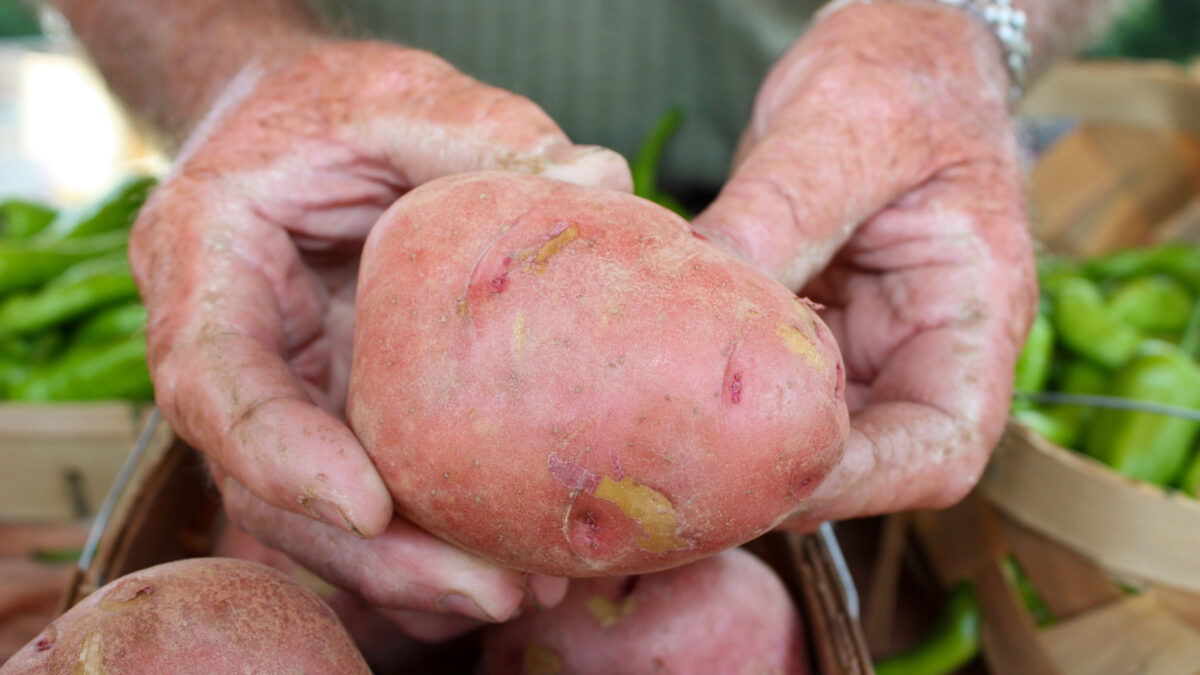With Fewer Hands in the Field, More Food Goes to Waste
TOPICS
Labor ShortageGuest Author
Special Contributor to FB.org

photo credit: Alabama Farmers Federation, Used with Permission
Guest Author
Special Contributor to FB.org
By Erin Anthony
Timing is everything. As a parent, that means grabbing a non-washable magic marker from your toddler’s hands right before the tip touches the living room wall. As a commuter, it’s about rolling up to the bus stop so that you’re not waiting too long in the rain but you’re not cutting it so close that you’re running after the bus as it pulls away. Farmers, too, have tight timelines, set by Mother Nature. When their fruits and vegetables are ripe for picking, there’s no time to waste. And waste is exactly the outcome when farmers can’t get enough workers in their fields at just the right time.
A World Wildlife Fund analysis examined four crops during the 2017-2018 growing season at farms in Florida, New Jersey, Idaho and Arizona. The WWF report, funded by the Walmart Foundation and the Foundation for Food and Agriculture Research, indicated that 40% of tomatoes, 39% of peaches, 56% of romaine lettuce and 2% percent of processing potatoes were left in the field. The report cited labor costs as a major driver of that waste, along with weather and market conditions.
But farmers like Burr and Rosella Mosby in Washington don’t need a report to tell them what happens when you have far too few hands in the field.
“It’s supposed to be that you work hard and produce something, and you’re getting paid at the end of the day,” Burr Mosby said in 2017 as he watched 20 acres of his zucchini squash being plowed under. “Here we produced something. We grew it, and I don’t have enough hands to pick it, put it in boxes, and sell it to the grocery store. That’s what hurts.”
At the time, the Mosbys estimated that their workforce shortage would cost them $100,000 in lost profits and productivity. But there’s also the cost to the greater good. Multiply the Mosbys’ 20 acres times an untold number of fields of all sizes, and the amount of food waste is unfathomable, especially because it doesn’t have to happen.
There are enough skilled farm workers – or at least there are far more than farmers now have access to – to harvest perfectly ripe tomatoes, peaches, apples, lettuce, zucchini and much more. There are also workers who are ready, willing and very able to help care for farm animals year-round. Unfortunately, most of them live outside this country and the current guest worker visa program fails to meet many farmers’ basic employment needs to allow these workers to come to the United States.
The best time to pass farm labor reform legislation was yesterday. The next best time is now.
The federal government's program to provide farmers with temporary foreign labor, H-2A, is costly and burdensome in several ways and just doesn't work for many farmers, including the Mosbys. Still, it’s all farmers have, and many are trying to use it, as evidenced by the steady increase in the number of H-2A applications they’re submitting. The second quarter of 2019 marked the first time the number of H-2A applications exceeded 5,000 during the second quarter. At the same time the number of applications is rising, the rate at which the Department of Labor is processing the applications is slowing down, which is problematic for farmers with extremely tight harvesting windows.
Delays aside, the 243,000 H-2A workers who came to the U.S. in 2018 filled just a sliver of the more than 2.4 million farm jobs. To fill these major gaps and reduce the waste of perfectly good food, along with the water, fertilizer and other resources that went into growing it, farmers are calling on Congress to establish an agricultural guest worker program that is flexible and affordable for farmers and effective in meeting the needs of all producers. A revamped agricultural worker program should also provide current workers the opportunity to earn legal status.
To paraphrase another time-related adage: The best time to pass farm labor reform legislation was yesterday. The next best time is now.
Erin Anthony is editor at the American Farm Bureau Federation.
Top Issues
VIEW ALL